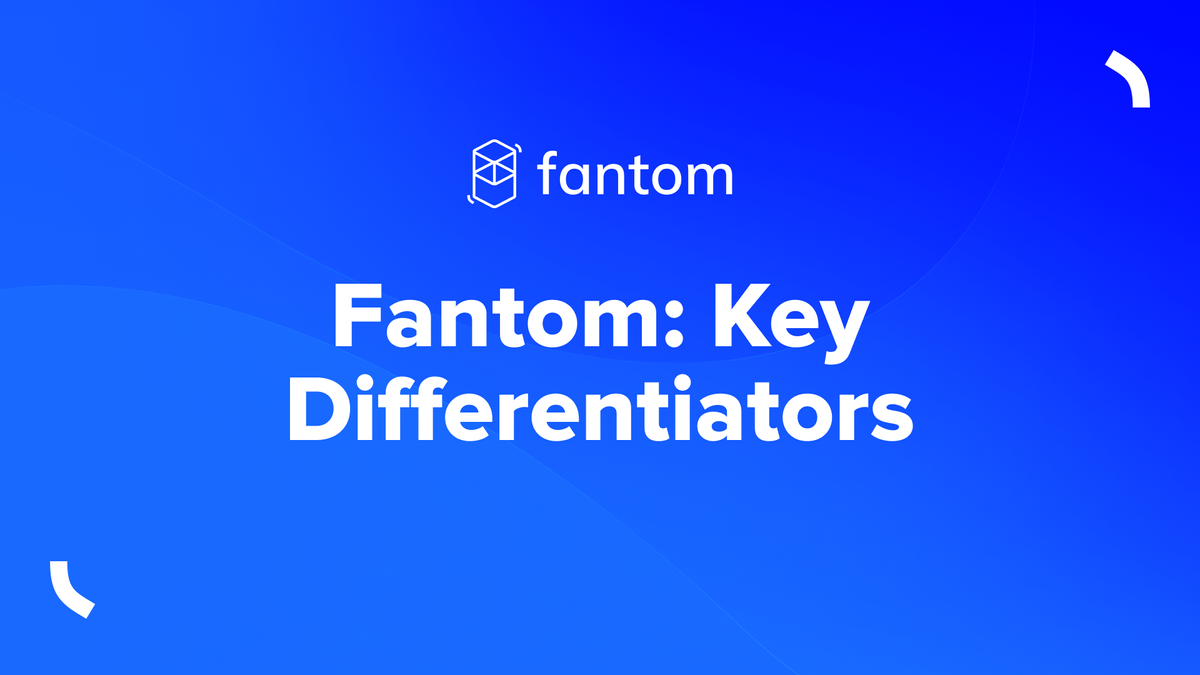Fantom: Key Differentiators

Through rain, shine, and market volatility, the Fantom team continues to build. The recent release of Snapsync on the network was the first of many upgrades that will cumulatively extend Fantom network capabilities for even greater throughput, security, and decentralization.
This article takes stock of where we are now in preparation for the many changes ahead ‒ for instance, the implementation of EIP-1559, high-efficiency data storage, and more. What differentiates Fantom? What are the strengths that we build on?
Fast deterministic finality
Fantom’s consensus model is Byzantine Fault Tolerant, which means that a transaction is final as soon as two-thirds of the network has confirmed it. On average, this process takes about 2 seconds. Finalized transactions on Fantom are irreversible, and the term that describes this process is deterministic finality.
By contrast, Bitcoin and Ethereum rely on probabilistic finality: a transaction is considered irreversible only after a certain number of subsequent blocks have been added to the chain. This means that a transaction is only deemed final after some time, once the block in which it was processed sinks deeper into the chain and the transaction is further referenced.
Chains with consensus mechanisms relying on probabilistic finality cannot promise absolute immutability. As the chain grows, it becomes more difficult and expensive to revert older transactions. Though the probability that older transactions will be reverted decays with time, it is never truly zero.
On Bitcoin, it is recommended to wait until a transaction is 6 blocks deep before declaring finality. On Ethereum, the recommendation is 20-25 blocks. Finality can take up to 6 minutes on Ethereum and up to an hour on Bitcoin.
Asynchronous transaction processing
Fantom’s aBFT consensus model allows nodes in the network to confirm event blocks containing transactions simultaneously, without depending on timing assumptions.
A key component of this is the protocol’s leaderless consensus. On Fantom, no validator plays a special role, and validators can independently pick up and communicate transactions in a constant stream to the broader network.
Asynchronous transaction processing translates into greater throughput, scalability, and lower fees since users don’t have to radically overbid to accelerate transaction confirmation.
Data pruning
The recently released Snapsync solution allows nodes to quickly download a pruned version of the blockchain and begin validating transactions in a fraction of the 24 hours usually required ‒ on Testnet, full nodes were able to sync in about 7 hours using snap mode.
Snapsync addresses the persistent data bloat problem that arises in any decentralized blockchain. The issue is that as a blockchain gets longer, the data associated with the chain gets ever larger. Larger data structures require increased node capacity and longer read/write times.
Data bloat also drastically slows node sync times and frequently requires protocols to throttle network speeds to allow nodes to sync fully. In this context, Snapsync is an essential piece of the foundation that will support further upgrades and increased network throughput.
Transaction fee burning
Since its launch on December 27, 2019, the Fantom network has burned 30% of all transaction fees.
Here is how it works: on Fantom, at the moment of block processing, 100% of transaction fees are burned. Data about the amount burned is forwarded to the Special Fee Contract (SFC), which is responsible for maintaining lists of validators and distributing rewards.
The SFC contract uses this data to mint 70% of burned fees and add them to validators' rewards. The result is that 30% of fees are burned in a trackable process in place since 2019. By reducing the overall supply, transaction fee burning on Fantom serves as a return that benefits the community.
Energy efficiency
The Fantom Proof-of-Stake network is highly energy efficient. We addressed this in detail last year, but based on updated figures for 2022 ‒ namely average gas use per day and a total of 69 validators ‒ we estimate that transactions on the Fantom network consume 0.00003 kWh per transaction.
Taking the average number of transactions per day this year-to-date, the forecasted total network energy expenditure for 2022 is 10,061 kWh ‒ less than the average total yearly electricity consumption of a single US home, which is around 10,700 kWh.
Based on current figures, Ethereum consumes over 8 million times more energy per transaction. Bitcoin consumes a whopping 70 million times more electricity per transaction than Fantom.
Interested in taking a deeper dive? Fantom’s code is open-source, and Fantom developers regularly publish research papers on the tested solutions they develop on the Fantom network.
This post describes Fantom now. We have much more planned for this year and beyond! So as always, keep up with the latest developments on the Fantom blog.



